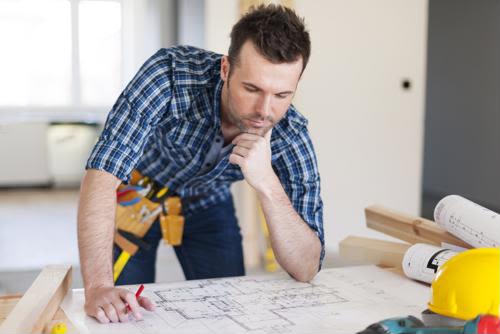- Home
- Resources
- Amerhart Insider Blog
- Project Inspiration
- 4 steps to age-proof homes
4 steps to age-proof homes
 The practice of living out retired years at a care facility or with relatives can be a thing of the past — as a growing number of retirees opt to stay in their homes as long as possible. However, this requires a certain level of planning, introducing an array of modifications to a home in preparation for the challenges of mobility in old age. Here are four steps to redefine senior living:
The practice of living out retired years at a care facility or with relatives can be a thing of the past — as a growing number of retirees opt to stay in their homes as long as possible. However, this requires a certain level of planning, introducing an array of modifications to a home in preparation for the challenges of mobility in old age. Here are four steps to redefine senior living:
Consider the details of the bathroom
Along with the kitchen, a bathroom is a place in the house utilized frequently. It's also a place prone to wet zones and slip hazards. To create an adequately age-proof space, consider introducing universal design features like adequate lighting and textured flooring, says Houzz. Some important features to consider include a shower bench, which introduces a safe space to sit — decreasing the strain on your body, as well as decreasing the chances of a dangerous slip. Benches can be built-in or free-standing and for space concerns, consider a seat that can flip up when not in use. Installing a handheld showerhead can allow you to sit while showering and is adjustable for height. For the shower set-up, also consider a curbless entry that eliminates the slippery step in and out (and makes it wheelchair-accessible).
Another detail to consider is toilet height. Most toilets are less than 16 inches high. A comfort-height toilet, normally ranging between 17-19 inches, can ease the strain on the back and knees.
Reduce reaching in the kitchen
There are details in the kitchen — like cabinet coordination or pantry design — that are often infrequently contemplated. However, if you're looking to make a home versatile for a lifetime, these are features to keep in mind. A pull-out pantry, for one, makes it easier to see everything with one single glance and eliminates the need to have to reach into the back for the hidden ingredient. Drawers will ease the strain on your back and knees.
When choosing cabinets and appliances, hesitate before picking the more ornate decorations. Details that jut out of from the counter can create an unintentional obstacle course.
 In collaboration with contractors and homeowners, a home can be uniquely age-proof
In collaboration with contractors and homeowners, a home can be uniquely age-proof
Don't neglect the home exterior
While there's a lot to focus on what's happening indoors, homeowners should take note to create a safer exterior as well. Illuminating the walkway by utilizing motion sensor lighting is one initiative to take outdoors, says HuffPost. Another important step homeowners can take to age-proof is repairing or replacing worn walkways. Broken concrete and uneven bricks are a recipe for a fall. If homeowners are frequently fumbling for their keys, consider including a sturdy table or shelf right by the front entrance. This way groceries and bags can be placed somewhere safe in the process of unlocking the door.
Make staircases safer
While a one-story home is the most practical for permanent living arrangements, it isn't always possible — the home that has always been in the family might be a multi-level, after all. So, if you're working with stairs, make sure to include a well-secured runner on slippery wood flooring (or use carpet throughout). Also, adding multiple light switches — at the top and the bottom of the stairs — will prevent homeowners from risking the steps in the dark. Handrails are also vital, so make sure that there is something secure to hold onto on both sides of the stairs.
As always, consultation with experts will produce the best results for a practical, barrier-free home that will serve its job for a lifetime. Budgets and timeframes will vary, but homeowners and contractors alike will want to keep key tips in mind to create a space that allows independent living for everyone.


















